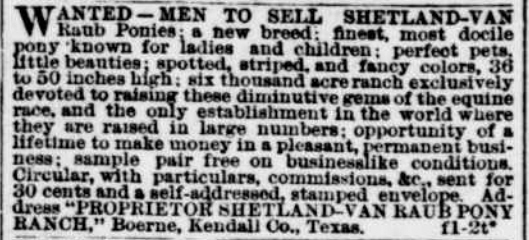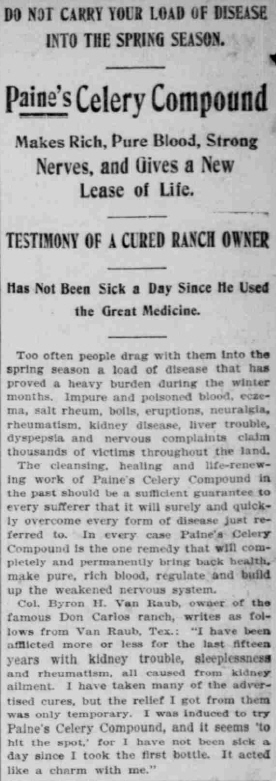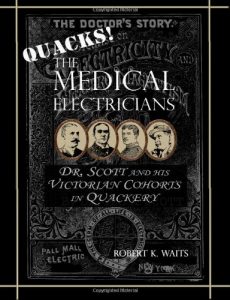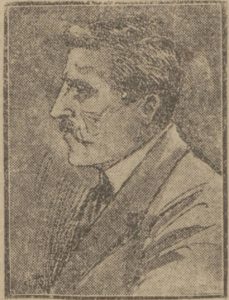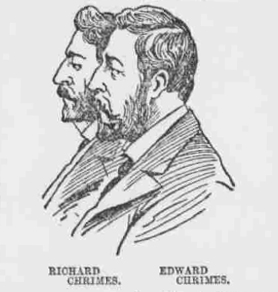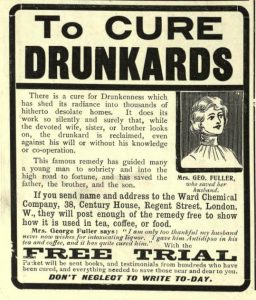 In the second part of his guest article, Robert K. Waits – author of The Medical Electricians – reveals Byron H Robb’s change of career from electro-magnetic entrepreneur to Texas rancher. Read Part 1 here.
In the second part of his guest article, Robert K. Waits – author of The Medical Electricians – reveals Byron H Robb’s change of career from electro-magnetic entrepreneur to Texas rancher. Read Part 1 here.
.
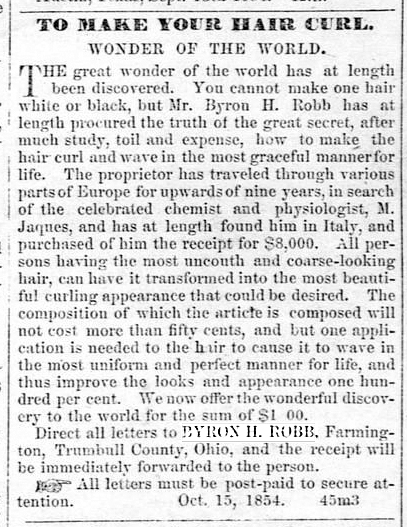
Even as a Farmington, Ohio, teenager in 1854, Robb was honing his skill as a mail-order fraudster, advertising a $1 secret ‘receipt’ (recipe) ‘To Make Your Hair Curl.’ He claimed to have purchased the recipe in Italy for $8000 after searching for nine years (that would have him start the search at age ten!). Robb was to return to the hair curling trade in the 1870s, selling an electro-magnetic hair curler (below) along with his brush. During 1881, J.W. Weakley, Jr. & Co. took over Robb’s Electro-Magnetic Brush Co. business.
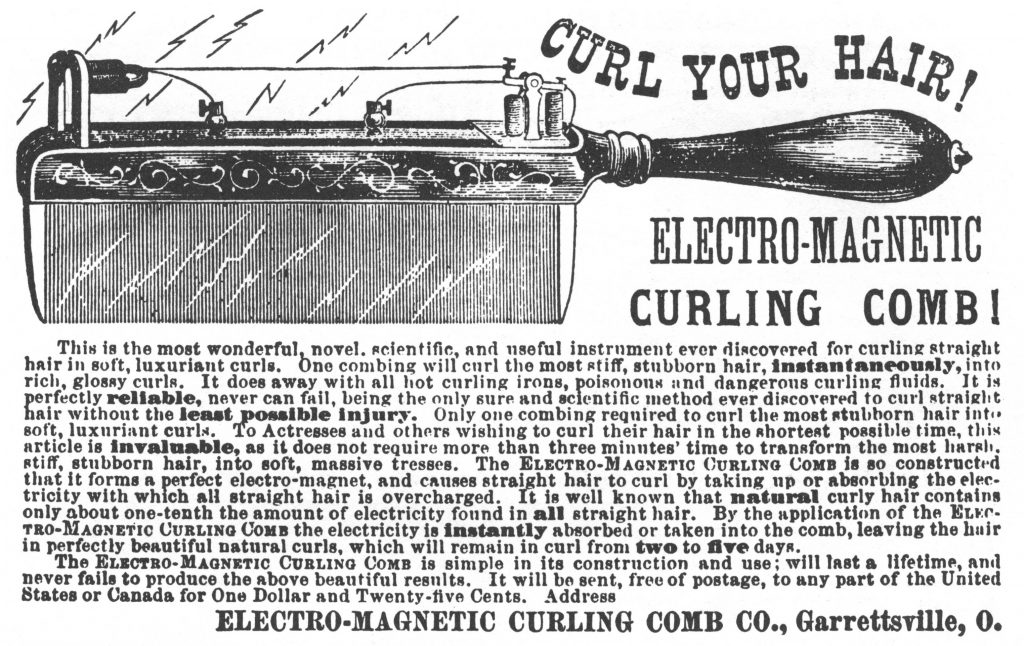
In 1882, after being repeatedly revealed as a fraud in Ohio, Robb relocated his family 1200 miles southwest to the Texas hill country. He also changed his family name, becoming Byron H. Van Raub. Fittingly, the German noun, Raub, translates as robbery. As the pioneer settlers in the region were German, this also suited his new last name. As Van Raub, he acquired land near Leon Springs, about 20 miles northwest of San Antonio, which he dubbed the Don Carlos Ranch (in 1890, he claimed to have a Pony Ranch of 600 acres, and by 1896 had added bloodhound kennels).
Soon Van Raub was raising Shetland ponies and advertising them for sale by mail-order. A typical letter sent to editors of rural newspapers reads:
I desire to introduce the sale of my fancy ponies and horses in your locality. I have no money to invest in advertising, but if you will insert the enclosed advertisement [for] six months … in your paper, and call attention to it editorially, I will ship you, free of freight, one or a pair … of beautiful ponies for your wife or little folks, in the first car-load lot that goes near your place. … (Signed) B. H. Van Raub.
The American Agriculturist didn’t take long to identify Van Raub as Robb, quoting a Vermont editor that ‘a good many editors have swallowed the bait’ (American Agriculturist, Sept. 1884, p. 391). Van Raub’s scheme was to send out circulars to those answering his ads (using postage provided by the inquirer) offering send a ‘catalogue’ for $1. In the catalogue he professes that he sells ponies ‘to make children happy’ and solicits agents to sell said ponies and offers a free pony to the agent in the first car-load sale, which would cost the customer $100-150. A victim in Michigan wrote that of a car-load of ponies (paid for in advance), only one of the twenty-two ponies was ‘… as represented. We were victims of very false misrepresentation … [by] a swindler of the deepest dye’ (American Agriculturist, Dec. 1886 and Feb. 1887, p. 81).
Van Raub somehow managed to have a local community near Leon Springs named Van Raub, Texas, and in 1889-1890, posing as an industrious civic supporter, placed want-ads for ‘a doctor to locate in a new railroad town’ with the proviso that he would be able to build and operate a small drug store … (The railroad was a branch of the new San Antonio & Aransas Pass line; in 1893, it was an hour journey between San Antonio and Van Raub). Van Raub undoubtedly was seeking an M.D. to lend credence to his mail-order nostrum sales. Between 1890 and 1893 a San Antonio newspaper reported periodic visits by ‘Byron Van Raub, the well known stockman of Van Raub station.’ By 1885 the community had a cotton gin, school, and a weekly newspaper. The town grew to 300 souls by 1886 and a post office was established in 1889. But the cotton gin closed in 1912 and the post office in 1919, and as the railroad business dwindled, Van Raub slowly became a ghost town. Even the ghost town has now disappeared, overrun by new developments.
The later activities of Mr. Van Raub are a mystery. Paine’s Celery Compound newspaper ads in 1902 (above) featured a testimonial: ‘ “… I have not been sick a day since I took the first bottle.” Col. Byron H. Van Raub, owner of the famous Don Carlos Ranch, Van Raub, Texas.’ On the last pages of a 1903 manual for goat raising Van Raub was reported to have been a breeder of Spanish-Maltese milk goats ‘for over 20 years.’ (A Manual of Angora Goat Raising, George F. Thompson, American Sheep Breeder Co. Press, Chicago, p. 220). This claim had apparently been discredited in 1902 (Wool Markets and Sheep, Nov. 1, 1902, p. 11, Draper Pub. Co., Chicago).
© 2014 Robert K. Waits
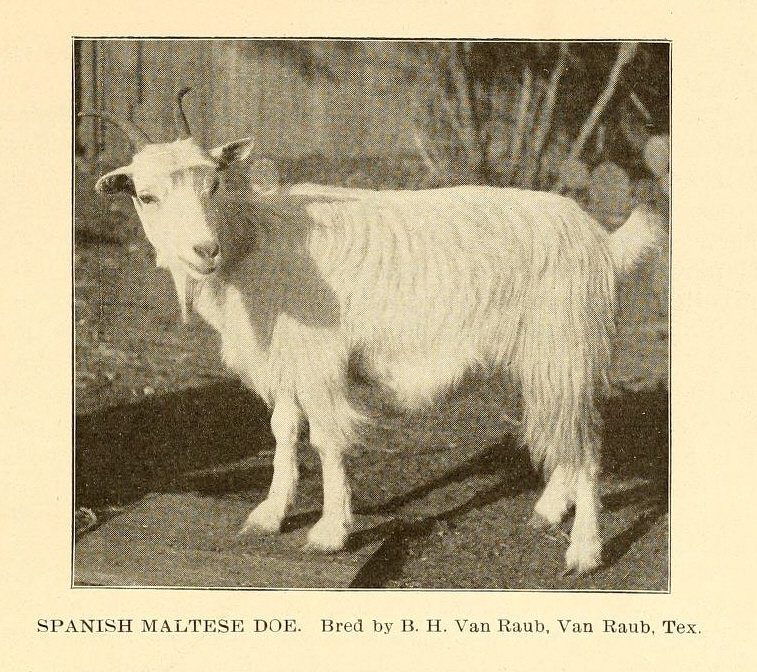
…………………………………………………………………………………………………………………..
The Medical Electricians: George A. Scott and His Victorian Cohorts in Quackery by Robert K Waits was published in 2013 and is available from Amazon.
